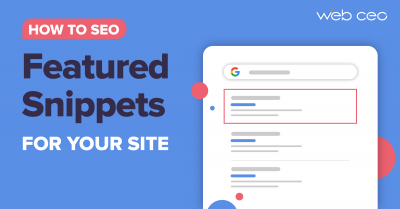
A dream of every website owner: to wake up, open Google Analytics and see the graphs go up. Number of users, conversions, everything that translates into real-life benefits and makes having a website worth it. Unfortunately, many webmasters struggle with turning this dream into reality. They need user traffic, and they aren’t getting anywhere near enough.
Seriously, how hard can it be to get views on your site? All you need to do is get it on Page 1, make the search result eye-catching, then get links from other sites and social media… On second thought, maybe it isn’t such a walk in the park. Website traffic can be pretty hard to earn! What is an honest law-abiding site owner supposed to do?
Worry not. You can get as much site traffic as you want, but only if you check out this infographic made by OneIMS. They’ve found 12 best ways to get a traffic boost, and all of them can work for you if you give them a try.
1. Optimize Landing Pages for SEO
Ideally, you’d want to improve website traffic for every page. However, your immediate business goals depend on the landing pages. That’s where you want conversions, and conversions can’t happen without visits. So most of the traffic has to go to landing pages. How to direct it there?
With SEO, of course.
When you design your landing pages to catch the users’ attention and draw them to the big shiny button, remember that a customer’s journey begins before they even open a search engine. Try to predict what they’ll type in Google, then find and use the best keywords for the task. The better you grasp user intent, the more traffic you can attract.
Building backlinks and spreading awareness in social media help a great deal, too.
2. Create Infographics
You often hear that infographics are a major help in SEO, and it’s true. They rank high in Google, they are shareable, they build backlinks like crazy, so is it any surprise they are magnets for user traffic, too? Any information becomes more fun to consume when you spice it up with visuals. Videos and presentations work better than plain text for the same reason.
So get in touch with your creative side. Start producing high-quality infographics and become popular with your target audience.
3. Embrace Latent Semantic Indexing
Google’s RankBrain is pretty good at understanding the contents of web pages. However, it can still make mistakes if the text is poorly written and the context around keywords isn’t clear enough. Help the AI understand your website better by enriching your vocabulary.
Research the topics you write about. Terms and synonyms related to your keywords will help more users to notice your website. More search terms and a ranking boost from Google will increase the number of website visitors.
4. Interlink Your Site’s Pages Efficiently
Links are one-way tubes that carry traffic between websites. Smart webmasters know to control the flow of traffic across their sites’ pages to maximize the benefits. They do it by designing an organized internal linking structure that ensures all the important pages get enough visitors. When you draw it on paper, it looks like a tree with the home page as the root.
Link your site’s pages in a way that will help users find the content they need. The rule of simplicity states: make the “click distance” between any two given pages three clicks or less.
5. Use Structured Data on Your Site
Have you ever seen Google search results with more information than usual? Review stars, telephone numbers, addresses and other minor details that make websites look more professional and credible? It’s all thanks to structured data. And you can implement it on your own site, too.
Learn how structured data works and use it to mark up your website’s pages. Google will see the schema code and decorate your search results with those pretty, click-attracting features.
6. Use Keyword Research Tools in Your SEO
Everyone knows the best source of new traffic is SEO, and SEO starts with keywords.
It’s not difficult to come up with a list of keywords from the top of your head. Unfortunately, our brains lack the means to calculate the keywords’ effectiveness. You need SEO tools for that.
Find new keywords and measure their search volume in tools such as WebCEO’s Keyword Suggestions and Google Adwords. If you want to gain an extra advantage over your competitors, spy on their keywords with WebCEO’s Competitor Keyword Finder.
7. Find Unused Keywords That Bring You Traffic
Did you know that your website appears in search results for keywords that you aren’t even using? This mysterious phenomenon can be explored in detail by using WebCEO’s Keyword Research tool.
Open the tool and the Keywords from Search Console tab in it. Find search phrases that you don’t use, but other people use to find your site. The ones with the highest rankings are the best candidates to be your new keywords.
8. Raise Your Organic Quality Score
The value of a website is measured by its content. Content is king. This famous principle defines modern SEO as we know it, and it’s the main reason behind how much traffic you receive at any given time. And what do we do with ironclad principles? Adapt to them and make them work for us, that’s what.
Fill your site only with high-quality content. If your site has any pages whose content is subpar, change and replace it with something greater. Increase the overall worth of your site to help it rank higher, and traffic will follow.
9. Optimize Your Images for Image Search
Did you know that images are subject to 30% of all online searches? That sounds like a rich opportunity to get more visitors to your website. How do you make this awesome fact work for you?
Obviously, you start by using images on your website – or else you can’t get any of that sweet image traffic. What kind of visuals should you use? Anything you can think of, really.
- Photos
- Diagrams
- Screenshots
- Comics
- Gifs
- Infographics
But to gain traffic from them, you need to optimize them for image search. That means using keywords in their titles and ALT tags. If you make them shareable across the social media, you’ll get even more traffic from there.
Important note: be careful with your images’ file size. “Heavy” pictures put a strain on website loading speed.
10. Refresh and Improve Your Old Content
Some pages on your site might not be getting as much traffic as they could. One of the possible reasons could be their content. If that’s the problem, it’s time to breathe new life in your weaker pages!
Find these problematic pages in WebCEO’s Rank Tracking tool (By Page tab). They have these traits:
- They have lost rankings and traffic with time;
- They have never ranked high.
Then improve their content and unleash their true potential.
11. Push Page 2 Keywords to Page 1
Some of your pages might be just slightly behind the coveted Page 1. All they need is a little push, and it’s in your power to give it. How can you help them?
Start with opening WebCEO’s Rank Tracking tool (Brief tab). Find which of your keywords are ranking on Page 2 of Google (their positions will be between 11 and 20), then find pages associated with them. Once you’ve identified those pages, build more links to them: either from higher ranking pages on your site or from external domains.
12. Get Featured Snippets for Your Content
Schema markup isn’t the only thing that can make your website stand out in SERPs. Another way is to master the art of getting featured snippets. How do you win a rich search result for your site? Google prefers pages that fulfil the following requirements.
- Optimize for a long-tail keyword in the form of a question phrase. The higher the search volume, the better.
- Write the question in your content and follow it up with a detailed and organized answer.
- Include a numbered or a bulleted list.
- Include a table written in HTML code, just like the list.
- Include an image associated with the topic of the page.



